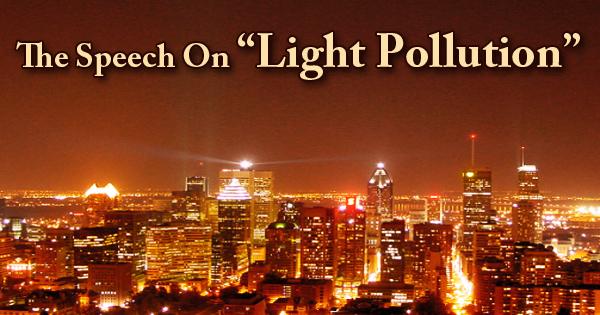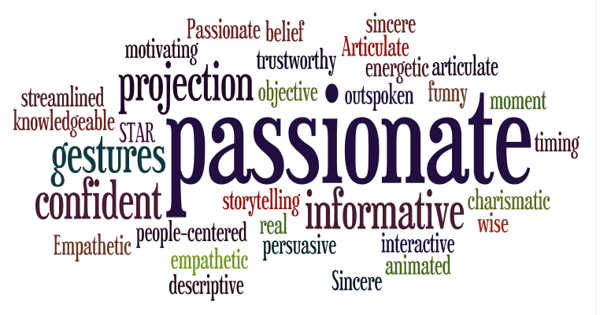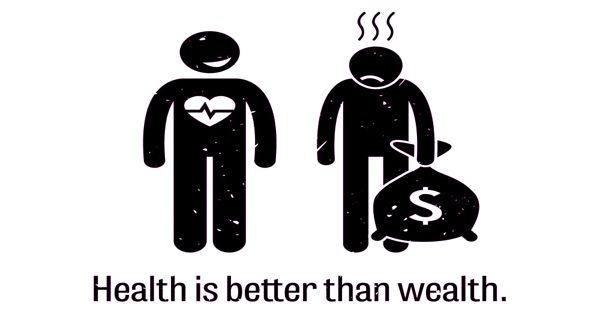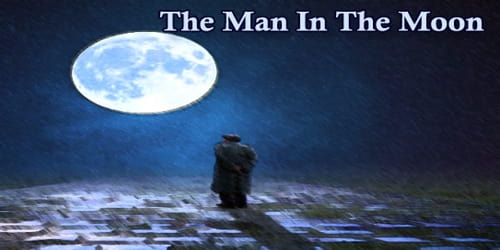A very Good Morning/Afternoon/Evening to Honorable Principal Sir/Madam, respected teachers, parents, seniors, and my dear friends/students, Warm Greetings to Everyone!
Thank you all for taking out time and being present at this seminar session. Today, I ……(name) stand in front of you all to address a very important topic which is making a lot of news these days; I would like to speech on the topic of “Light Pollution”.
If we went out a little more than a hundred years ago, we could walk out in the city at night, and we could see the arch of the Milky Way galaxy through the night sky. We could see how thousands of stars were part of our daily lives and how artists like Van Gogh or musicians like Gustav Holst or authors like William Shakespeare were influenced by them. Today, as we allow our starry night sky to be washed out by artificial lights, we are losing touch with our cultural heritage that has made us who we are. We also lose touch with what their future generations might encourage.
Fundamental evolutionary reality is that we humans are diurnal that are daily (active mostly during the day). Humans have eyes which are suited to living in the light of the sun. We have engineered the night by filling it with artificial light to welcome us. This technology is almost the same as damming a river. It has advantages, but also implications. Light pollution has these effects. This can have serious environmental effects on our climate, humans, and wildlife. A few of the light pollution components are:
- It is called the Light Trespass, and when the light appears in an unjustified spot, it occurs where it is not required.
- The second aspect is Glare, which means unnecessary light exposure that causes the people around them discomfort.
- The third is Skyglow, which refers to the night sky’s illumination of the populated areas.
- Clutter, which refers to a huge and haphazard group of artificial light sources, is the last part.
Pollution caused by misplaced artificial light and reflections such as outdoor light that scatters and reflects back to the ground in the atmosphere is light pollution. Light makes it possible for a fraction of the light to go up into the sky. This adds to the light of the sky. Light pollution is accentuated by particles in the atmosphere that cause air pollution by increasing the amount of light dispersion. Around one-third of the energy used for outdoor lighting has been found to be mirrored in outer space, where it is lost, so it serves no useful function at all. The pace at which urban areas are rising also plays a major role in improving light pollution.
Due to the industrial revolution, light pollution has entered its worst stage and its origins are as follows:
- Streetlights
- Lightings at the exterior and interior of commercial setups
- Lightings in the offices, factories
- Illuminated sports locations
- Illuminated billboards; etc.
As countries became industrialized, urbanized, and, of course, affluent in the last five decades, the need for outdoor lights increased and light pollution went to the rural as well as the suburban regions outside the city limits. Please recognize that outdoor lights are intended to serve a function, i.e. to give people a better view at night and the much-needed protection, of course. But it would be totally unreasonable if you happen to surpass its justifiable limit, and immediate action will be taken.
Light pollution prevents migrant birds from seeing the moon and stars that they need to use to follow the course of their migration, so they can not migrate to the right place. Sea turtles often do not come as frequently to the shore and nest, because they are afraid of the lights. It also affects the eyes of animals, as a camera flash weakens the eyesight of animals. The natural regular cycles of light and dark orchestrate the rhythm of life, so disruption to these patterns affects the dynamics of ecology.
We see that light pollution is most prevalent in major cities, but in suburban areas, around airports or large sporting event facilities, and along highways where illuminated billboards and streetlamps are common, it can also have an effect. Light pollution is more annoying for humans than an environmental problem, which can make it difficult to see stars or interfere with sleep.
The popular types of environmental pollution, such as water pollution, air pollution, noise pollution, and soil pollution, are all well known to all of us. Light pollution, however, might sound very new to you all. It is a fact that we must understand that artificial lights, in the manner that other man-made contaminants do, impact natural light at many levels! Light pollution also affects amphibians, even though they do not live in a metropolitan city, since light pollution not only causes issues in areas with a significant amount of light but also affects the areas surrounding it.
Light pollution is responsible for causing different diseases directly or indirectly. Its influence is directly related to the disruption that the circadian rhythm induces. This raises the chances of certain illnesses, such as:
- The development of cancerous cells;
- Reduced secretion of melatonin hormone;
- Impairment of the immune responses; etc.
The good news is that, by protecting lights properly, light pollution can be minimized very quickly. Only when and where it is needed should we use a light. We can easily minimize light pollution by only using the necessary number, by using energy-efficient bulbs, and by using bulbs with sufficient spectral power distributions for the task at hand. People around us will also improve themselves if we change ourselves; that’s how we bring positive change to our society. Wastage leads to more wastage and saving leads to more saving; so if you want wastage or saving, now the choice is yours. In each quarter of our lives, the more we save, the better for us and the next generation.
Hope you all have a great time.
Thank you all.
















